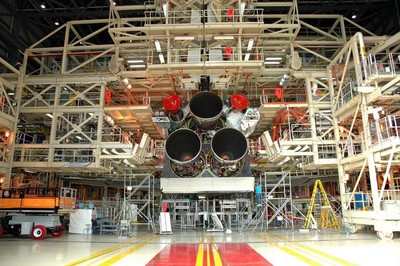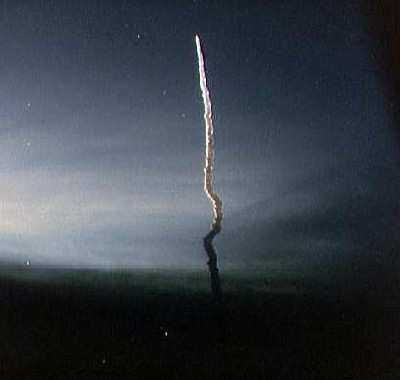Tue, Feb 22, 2005
New Damage Detection Sensors Not Ready To Fly
 More than two years of careful
investigation and painstaking planning may come down to the last
minute in NASA's attempt to return its remaining shuttle fleet to
service in May. Even though Discovery's launch date has been set,
not everything NASA pledged to the Columbia Accident Investigation
Board has come to fruition. In this case, the new sensors designed
to detect fatal hull breaches may not actually work until the very
last minute before launch.
More than two years of careful
investigation and painstaking planning may come down to the last
minute in NASA's attempt to return its remaining shuttle fleet to
service in May. Even though Discovery's launch date has been set,
not everything NASA pledged to the Columbia Accident Investigation
Board has come to fruition. In this case, the new sensors designed
to detect fatal hull breaches may not actually work until the very
last minute before launch.
"We expect that an army of engineers and scientists on the
ground will be working this (inspection) problem very hard right up
till the day of launch," said rookie astronaut Charles Camarda in
an interview with USA Today.
NASA Space Operations chief William Readdy, though not
specifically asked about the sensor issue, told USA Today he sees
no major roadblocks to the May 15th return to flight.

But USA Today reports there are a number of issues addressed by
the CAIB that are still in the works:
- Engineers will have to resolve what appears to be a major
miscalculation. In the wake of the hull breach that doomed
Columbia, NASA officials believed that, upon re-entry, the leading
edges on the shuttles' wings could withstand a crack wider than 0.2
inches. That's apparently not the case. Three weeks ago, according
to USA Today, engineers came to believe a crack less than one-tenth
of that width could be potentially fatal.
- A relatively inexperienced team of Boeing engineers monitoring
Columbia's final, tragic flight initially disregarded a
computerized damage projection based on data from the impact of
fuel tank foam on Columbia's wing. The projection indicated
the damage was fatal. But the Boeing engineers, many working on
their first live space mission, decided the projection was faulty.
The engineers took a lot of heat over their decision and NASA took
quite a bit as well, for accepting the Boeing report even though
parts were incomplete. More than two years later, the
computer projections still have not been independently
reviewed.
- Three months before Discovery's return to flight, there are
still no firm procedures for scanning the shuttle to detect damage
prior to re-entry. Astronauts haven't been able to train on damage
inspections.

"We're kind of taking these sensor systems to their limit, and
we need to understand what the limits are," Camarda told USA
Today.
More News
Also: Kodiak 100 Joins USFS, Innovative Solutions & Support Renamed, Gulfstream Selects Honeywell, Special Olympics Airlift The Phantom 3500 mockup made an appearance where the>[...]
Also: USAF Pilots, Atlanta Tower Evac, Archer Spotlight Dissipates, Hop-A-Jet Sues A social-media call for people to point lasers at aircraft flying over Portland’s ICE facil>[...]
“We developed this prototype from concept to reality in under a year. The U-Hawk continues the Black Hawk legacy of being the world’s premier utility aircraft and opens>[...]
Flameout Pattern An approach normally conducted by a single-engine military aircraft experiencing loss or anticipating loss of engine power or control. The standard overhead approa>[...]
Student Pilot’s Failure To Maintain Airspeed And Altitude Resulting In A Collision With The Ground During The Base To Final Turn Analysis: The solo student pilot reported she>[...]
 Airborne 10.15.25: Phantom 3500 Confounds, Citation CJ3 Gen2 TC, True Blue Power
Airborne 10.15.25: Phantom 3500 Confounds, Citation CJ3 Gen2 TC, True Blue Power Airborne 10.14.25: Laser Threat, VeriJet BK, Duffy Threatens Problem Controllers
Airborne 10.14.25: Laser Threat, VeriJet BK, Duffy Threatens Problem Controllers Aero-News: Quote of the Day (10.20.25)
Aero-News: Quote of the Day (10.20.25) ANN's Daily Aero-Term (10.20.25): Flameout Pattern
ANN's Daily Aero-Term (10.20.25): Flameout Pattern NTSB Final Report: Schweizer SGS 2-33A
NTSB Final Report: Schweizer SGS 2-33A





